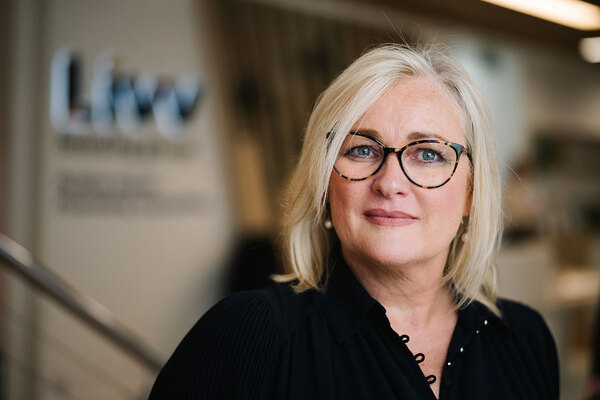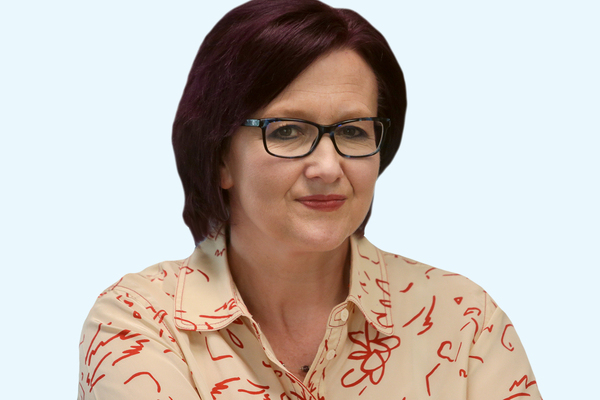Why data is your ally for efficient management of housing stock
How for-profit L&G Affordable Homes is successfully using Salesforce tech to strengthen its asset management system

In association with:

Legal & General Affordable Homes
How social landlords look after and manage their properties has become a defining issue in the sector.
The government is aiming to tackle this issue with the introduction of the Social Housing (Regulation) Act to improve standards, safety and the operation of homes. As part of this, the Regulator of Social Housing is being handed new extended powers to ensure that landlords are doing all they can to ensure residents are being listened to and are living in safe, decent homes.
But ultimately it remains down to housing providers to ensure their homes are being properly maintained and they are offering a good service to residents.
So what is the best way for landlords to achieve this? Advances in technology mean that housing providers now have increasingly sophisticated means to deal with the vital area of asset management.
Everything on one platform
One provider that is taking advantage of this technology is for-profit Legal & General (L&G) Affordable Homes. Unlike many other landlords, L&G does not have legacy stock that needs updating. This is partly due to being a new landlord, established in 2018. As a result, L&G’s challenges around carbon net zero targets, damp and mould, and refurbishment for safety are not as extensive as a landlord with stock that is 50 years old, for example.
The firm only acquires newer, high-quality stock, with an Energy Performance Certificate rating of Band B or above predominantly in London, the South East and the Home Counties. Nevertheless, it is still crucial it has a strong asset management system in place.
It has led L&G to seek out its own system that it could design in conjunction with technology giant Salesforce.
“A number of us in the business had been around the block and there wasn’t a single system that could do everything we wanted,” says Karen Heaney, director of investment and compliance at L&G Affordable Homes.
“We wanted to use Salesforce as a platform, then make everything bespoke based on what we wanted to achieve.”
Ms Heaney says the aim with the system was to make the “technology and data do the heavy lifting”.
She adds: “We wanted a single platform that would drive a really, really good customer experience. For example, we didn’t want the customer to have to go and hunt for old documents to find the make and model of a boiler.”
The technology allows L&G to build up what Ms Heaney calls a “really good data repository”.
She says: “It allows you to host everything that you should possibly need to look towards the business planning side, future-proofing of the asset and the repairs and maintenance.”
A bespoke approach
For example, the system L&G has designed means it can keep a detailed track of when essentials, like a boiler, might need replacing. “One of the things I used to get frustrated with as an asset manager was there was a blanket approach to when you replaced your boilers,” says Ms Heaney. “They generally have a lifespan of 15 years and cost a certain amount to replace. But we all know that some boilers will last longer and some will never last that length of time, some are more expensive and some are cheaper.”
The Salesforce system L&G is using means it can predict when a boiler might need replacing and how much it will cost to replace based on the type of model and its lifespan.
But it also goes beyond that and allows the firm to keep a track of servicing requirements. “I’m able to tag that to a component and generate a schedule to send to maintenance suppliers,” says Ms Heaney.
“It allows us to predict the way our asset base components are performing and whether they’re performing against our projections. And the customer gets a better experience.”
Understanding assets
Beyond L&G, Ms Heaney believes these types of systems can help other providers in the sector, as she has seen how it can make processes more efficient.
“In my experience, the housing sector generally struggles with tech. Sometimes it’s easy to fix a problem in front of your nose, but then there can be another problem on the horizon,” she says.
So what would her advice be to other landlords thinking about asset management?
“My advice would be to think big and consider how you can use technology to help you to really understand the quality of the asset you have.”
“Today, our approach to asset management extends beyond preserving structures”
In an era where the sanctity of home is more pivotal than ever, social landlords are not just providers of housing but are custodians of well-being, safety and community resilience. The echoes of the Grenfell Tower tragedy in 2017 and the profound sadness of toddler Awaab Ishak’s case continue to reverberate, reminding us of our responsibilities in social housing.
Our sector stands at the crossroads of transformation, propelled by the Social Housing (Regulation) Act, to ensure that standards and safety are not merely compliant, but instead are exemplars of excellence. The evolution in asset management is not just a regulatory adjustment but a moral imperative to embrace.
Today, our approach to asset management extends beyond preserving structures. It encompasses the nurturing of communities and a proactive stance on the challenges residents face. Social landlords have had to transition from traditional methods to innovative practices, integrating technology, data analytics and resident engagement for improved efficiency.
Investment in technologies such as those offered by Salesforce will improve the customer experience at every interaction, including property inspections and repair processes, and enable teams to make business-critical decisions in real time – providing a powerful example of how the combination of AI, data and CRM (customer relationship management) can be a force for good in our society by helping to unlock trends and patterns that benefit residents and communities.
Yet, our biggest challenge remains the bridging of the historical gap between the operational capabilities of asset management and the needs of our communities. Partnerships with experts like Salesforce have allowed organisations to leverage cutting-edge technology that streamlines processes, predicts maintenance needs and engages with residents more meaningfully.
Data has been our ally in these achievements, informing decision-making and illuminating the path to improved living conditions. Data and technology will continue to embed themselves as critical enablers, from optimising productivity, to scaling operations and driving up satisfaction for more efficient and effective asset management. We must seek to embrace these and use them as a platform that can improve the experience of all residents and shape a better future for the sector.










